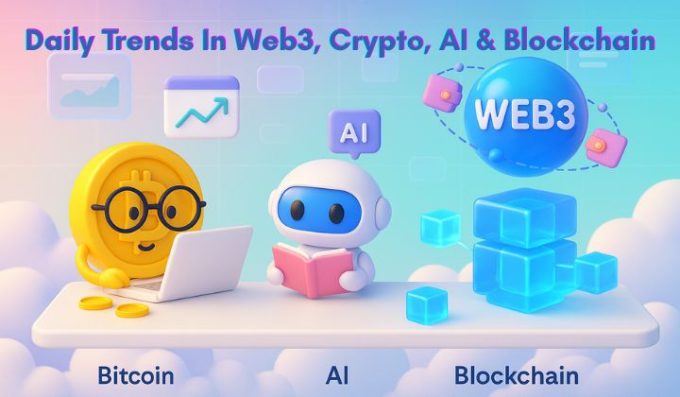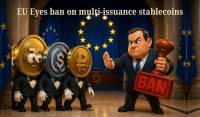The Howey Test On NFTs
By Laxmikant Khanvilkar
Among many lingos associated with non-fungible tokens (NFTs), the one which has captured the imagination of many is the “Howey Test”.
However, for the uninitiated, what does this Howey Test mean and what does it have to say about NFTs? And, for NFT pros: How will it help assess the spike in NFT space? And, how does any NFT qualify as a ‘transferable security’ as defined by MiFIDII?
Anything marketable at a market place will be identified as a security. There are many such questions that require clarification.
Here, we will try to solve this jigsaw puzzle.
What is The Howey Test?
The Howey Test is named after William J. Howey. “Born in Odin, Illinois, in 1876, William John Howey was a larger-than-life character whose rise and fall was deeply tied to the boom and bust days of 1920s Florida.
Raised on a farm and armed with only a limited formal education, Howey became one of the state’s most successful citrus developers, opening the first Florida citrus juice plant and building his unique sales program for selling the cultivated citrus groves as asset-backed securities investments.
By 1920, Howey had accumulated 60,000 acres of highly profitable citrus groves. He would plant about 500 acres annually and keep half of it for himself. The other half, he would sell to the public as “narrow strips of land,” each acre planted with 48 trees, later doubled to 96 trees per acre.
Howey also owned a service company called Howey-in-the-Hills Service Inc., which took care of the crops, and the two corporations jointly were listed in the “investment contracts.”
Obviously, neither the Howey case (resembling investments in citrus trees in 1946) nor the Howey Test says anything about a modern phenomenon like NFT. And up until now, the SEC hasn’t published any official guidelines or statements on how to evaluate the legal status of NFTs.
However, as per SEC Commissioner Hester M. Peirce’s video interaction in March 2021, NFT creators should be aware that they might, in some instances, end up creating securities:
“We [the SEC] have an interest in anything that could be a security…but the whole concept of an NFT is that it’s supposed to be non-fungible, so it is supposed to be unlike anything else, which, in general, makes it less likely to be a security.”
But people are being very creative in the types of NFT they are putting out there – it’s a wonder what some people will pay for! And so, given that creativity, as with anything else, you should be asking questions, if you are doing something where you are saying: ‘I am selling you this thing, and I am going to put a lot of effort into it…building something so that the thing you are buying has a lot of value.’
That is going to raise the same kind of questions that these initial coin offerings (ICOs) have raised. Investors are required to be very careful when doing something like that.
Investors need to be careful while deciding to take a bunch of these NFTs and putting them in a basket and then break them up and sell fractional interest or even if buying one NFT and selling fractions.
For example, if they are selling for 69 million dollars, one might want to break the NFTs up and sell fractional interest, and then have to be careful not creating something that’s an investment product – that’s a security.
Some common understandings about NFTs
The current common understanding when it comes to the US seems to be that NFTs will not be deemed securities according to the Howey Test in cases such as the following:
- If an NFT is used as a digital, blockchain-based deed to prove the originality and provenance of a digital or a physical asset such as an artwork.
- If NFTs represent collectables – in the ratio 1 asset = 1 NFT – like CryptoPunks or digital in-game items such as skins or digital weapons.
- If NFTs are used, for instance, to represent concert tickets, because the NFT may be a highly efficient and secure way of transferring tickets, keeping track of them, and fighting attempts of fraud and scams.
- If NFTs are used for registration of all kinds of physical assets and by doing so replacing cumbersome paper-based deeds with more secure and efficient digital, blockchain-based deeds that potentially enables the owner of the asset to easier make the asset tradeable and liquid or to use it as collateral for loans on DeFi platforms.
That said, when it comes to breaking up or fractionalizing NFTs, making them into F-NFTs, one must be careful while dealing in NFTs. An NFT by definition is non-fungible, but by fractionalizing the NFT, the new fractions most likely become fungible and get the same characteristics very much as traditional financial instruments deemed securities.
Here, considering MiFID II, it talks about financial instruments as ‘transferable securities’, meaning that the attribute of transferability is vital when analyzing whether an asset is to be deemed a security or not.
The MiFID II’s definition of transferable securities, is that: “Such instrument does not have to be actually traded on the capital market at a certain moment in order to qualify as transferable security.”
If minting an NFT is to prove that digital work of an art belongs to an artist, then such an NFT would have certain attributes in common with transferable securities like stocks to become a transferable security itself.
None of the current financial regulations specifically regulates entities performing activities with NFTs, and the most recent guidance from FATF indicates that NFTs might not even fall under the EU definition of virtual currencies as set forth in the AML Directive.
One could therefore argue that NFTs currently find themselves in a regulatory no man’s land, but that would be a precipitate stand.
Variations of NFTs, such as fractionalized NFTs, would most likely fall under the legal definition of virtual currencies and thus financial regulation.
At some point, the regulators will start looking closer into all possible aspects of NFTs, and the issuers and providers of NFTs would be advised to start keeping some kind of track record of sales and, if possible, voluntarily implement some simple KYC procedure.
You need to login in order to Like














